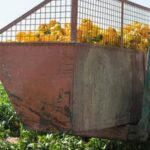Vegetable gardening watering systems play a crucial role in the success of a garden. Proper watering is essential for the healthy growth and development of vegetable plants, and it is important to understand the impact that under or overwatering can have on the overall health of your garden.
In this article, we will explore the various types of vegetable gardening watering systems, their pros and cons, factors to consider when choosing a watering system, and tips for designing an efficient watering schedule.
Watering plays a vital role in providing plants with the necessary moisture and nutrients for growth. Without proper hydration, vegetable plants may suffer from stunted growth, wilting, or even death. On the other hand, overwatering can lead to root rot and other diseases that can also negatively impact plant health. Understanding the importance of proper watering is essential for any successful vegetable gardening endeavor.
There are several types of watering systems that can be used in vegetable gardening, each with its own set of advantages and disadvantages. Drip irrigation systems, soaker hoses, hand watering, and sprinkler systems are among the most commonly used methods.
Each system has its own unique features and characteristics that make it suitable for different gardening needs and preferences. In the following sections, we will explore these various options in detail to help you decide which system is best for your vegetable garden.
Types of Vegetable Gardening Watering Systems
When it comes to vegetable gardening, one of the most important factors to consider is proper watering. Without an efficient watering system in place, your vegetables may struggle to grow, develop diseases or even die. Understanding the impact of under or overwatering on plant growth and health is crucial for successful gardening.
Overwatering can lead to root rot, while underwatering can result in stunted growth and reduced yield. Therefore, it’s essential to choose the right watering system for your vegetable garden.
There are several types of vegetable gardening watering systems that you can consider. Drip irrigation systems are a popular choice as they deliver water directly to the base of plants, minimizing water waste and promoting healthy root development. Soaker hoses are another efficient option that provide slow and even watering directly to the soil surface, reducing evaporation and water runoff.
Hand watering is a simple and cost-effective method but may not be feasible for larger gardens. Sprinkler systems are also commonly used but may not be as efficient as other methods in terms of water conservation.
Each type of watering system has its own set of pros and cons that should be considered when making a decision. Factors such as cost, efficiency, ease of use, and compatibility with different soil types must all be taken into account when choosing a system for your vegetable garden. It’s important to also consider your climate and weather conditions, the type of vegetables being grown, and the environmental impact of each system.
By carefully weighing these factors, you can determine which watering system would be most suitable for your specific needs. Whether it’s drip irrigation or soaker hoses, finding the right watering system will ensure healthy and thriving vegetables in your garden.
Pros and Cons of Each Watering System
When it comes to vegetable gardening, choosing the right watering system is crucial for the success of your plants. Different watering systems have their own advantages and disadvantages, and it’s important to weigh these factors before deciding which one to use in your garden.
One popular option for vegetable gardening watering systems is drip irrigation. This system delivers water directly to the base of the plants, reducing evaporation and water waste. Drip irrigation is also efficient in delivering water to the roots, promoting healthy growth. However, the initial cost of setting up a drip irrigation system can be higher compared to other methods, and maintenance may be more involved.
Soaker hoses are another common choice for watering vegetables. These hoses release water slowly along their length, allowing it to seep into the soil around plants. Soaker hoses are relatively affordable and easy to install, but they may not be as precise in delivering water as drip irrigation systems.
Hand watering is a traditional method that allows for precision and control over where the water goes. It’s also a simple and cost-effective option for smaller gardens. However, this method can be time-consuming, especially for larger vegetable plots.
Considering factors such as cost, efficiency, ease of use, and garden size will help you determine which watering system is best suited for your vegetable gardening needs. Whether you choose a low-cost option like hand watering or invest in a more advanced system like drip irrigation, proper consideration of each system’s pros and cons will ensure that your garden thrives while conserving water resources.
Factors to Consider When Choosing a Watering System
Soil Type and Drainage
One of the most important factors to consider when choosing a watering system for your vegetable garden is the type of soil you have and its drainage capabilities. Sandy soil, for example, drains quickly and may require more frequent watering, while clay soil holds onto moisture longer. Understanding your soil type will help determine the best watering system for efficient water delivery to your plants.
Climate and Weather Conditions
The climate and weather conditions in your area play a crucial role in selecting the right watering system for your vegetable garden. In hot and dry climates, a drip irrigation system or soaker hoses are ideal as they deliver water directly to the root zone, minimizing water loss due to evaporation. Alternatively, in areas with frequent rainfall, a simpler hand-watering method may be sufficient.
Type of Vegetables Being Grown
Different types of vegetables have varying water requirements. For example, leafy greens like lettuce and spinach require more frequent watering compared to root vegetables such as carrots and beets. When choosing a watering system, it’s essential to consider the specific water needs of the vegetables you are growing in order to provide adequate moisture without overwatering.
Water Conservation and Environmental Impact
With increasing awareness of environmental sustainability, it’s important to choose a watering system that promotes water conservation and has minimal impact on the environment. Drip irrigation systems and soaker hoses are known for their efficiency in delivering water directly to plant roots while minimizing waste. Considering the environmental implications of your watering system choice is crucial for sustainable vegetable gardening practices.
By taking these factors into consideration when choosing a watering system for your vegetable garden, you can ensure that your plants receive the right amount of water while promoting efficient use and conservation of this vital resource. Whether it’s through careful consideration of soil type, climate conditions or environmental impact, selecting the appropriate watering system is essential for successful vegetable gardening.
Designing an Efficient Watering Schedule
When it comes to vegetable gardening, one of the most crucial factors to consider is implementing an efficient watering schedule. Proper watering is essential for the healthy growth and development of vegetables. Without adequate water, plants can suffer from stunted growth, wilt, and even premature death. On the other hand, overwatering can lead to root rot and other issues. Therefore, understanding the importance of a well-designed watering schedule is key to successful vegetable gardening.
Factors such as soil type and drainage, climate and weather conditions, as well as the type of vegetables being grown all come into play when creating a watering schedule. For example, sandy soil drains water more quickly than clay soil, so it may require more frequent watering.
Similarly, hot and dry climates will necessitate more frequent watering compared to cooler and moister conditions. Different types of vegetables also have varying water requirements that need to be taken into account when designing a watering schedule.
In order to maximize water absorption and minimize waste in vegetable gardening, it is essential to efficiently distribute water to the roots of the plants. This can be achieved by using mulch to retain moisture, watering early in the morning or late in the evening to reduce evaporation, and adjusting the frequency and duration of watering based on weather patterns.
By incorporating these factors into your watering schedule, you can ensure that your vegetable garden thrives while conserving water at the same time. Whether using traditional methods or advanced vegetable gardening watering systems such as drip irrigation or soaker hoses, having an efficient watering schedule is key to successful vegetable gardening.
DIY Vegetable Gardening Watering Systems
Vegetable gardening requires a consistent and adequate water supply in order to ensure healthy plant growth and abundant yields. One effective way to achieve this is by installing a suitable watering system. While there are various commercial options available, creating your own DIY vegetable gardening watering system can be a cost-effective and creative solution. Below are some creative and cost-effective ways to create your own watering system:
- Drip Irrigation System: This method involves strategically placing hoses with small holes near the base of plants to deliver water directly to the roots. It minimizes water waste by reducing evaporation and runoff.
- Soaker Hoses: These are porous hoses that allow water to seep out slowly along their length. They can easily be laid out around plants or in rows, providing gradual and efficient hydration.
- Homemade Watering Can: Repurpose an old milk jug or large plastic bottle by poking holes in the cap. Fill it with water and use it as a gentle sprinkler for your plants.
Creating a simple drip irrigation system for your vegetable garden is easier than you might think. To get started, you will need some basic materials such as PVC pipes, connectors, and a timer for automated watering.
- First, plan out the layout of your garden beds and determine where you want to place the irrigation lines.
- Next, cut the PVC pipe to the appropriate lengths using a saw, then connect them using T-joints or elbow joints.
- Once the main lines are set up, insert smaller feeder lines with drip emitters near each plant or along the length of rows.
By following these steps, you can create an efficient DIY vegetable gardening watering system that delivers water directly to the root zone of your plants.
Understanding how to create an effective DIY vegetable gardening watering system can help ensure that your plants receive proper hydration without wasting water or causing unnecessary stress on your crops. Taking into account factors such as cost-effectiveness and ease of installation, these DIY methods offer environmentally-friendly solutions for maintaining healthy vegetables throughout the growing season.
Troubleshooting Common Watering Issues
When it comes to vegetable gardening, proper watering is essential for the overall health and productivity of your plants. Without adequate water, vegetables can suffer from stunted growth, poor fruit development, and even wilting or death. On the other hand, overwatering can lead to root rot, mold growth, and nutrient leaching. Understanding the importance of proper watering in vegetable gardening is crucial for successful cultivation.
There are various types of vegetable gardening watering systems that can be used to ensure that your plants receive the right amount of moisture without wasting water. Some options include drip irrigation systems, soaker hoses, hand watering, and sprinkler systems. Each system has its own advantages and disadvantages when it comes to factors such as cost, efficiency, and ease of use.
When choosing a watering system for your vegetable garden, there are several factors that need to be taken into consideration. These include soil type and drainage, climate and weather conditions, the type of vegetables being grown, as well as water conservation and environmental impact. By evaluating these factors, you can select a watering system that best suits your specific gardening needs.
Here are some common issues that gardeners may encounter when dealing with their vegetable gardening watering systems:
- Dry or waterlogged soil
- Uneven moisture distribution
- Over or under-watering
By identifying these issues early on and taking the necessary steps to address them promptly, you can prevent potential damage to your plants and ensure a healthy harvest from your vegetable garden. Regular maintenance and care of your chosen watering system will also help in avoiding common problems associated with irrigation equipment.
Maintenance and Care of Vegetable Gardening Watering Systems
Cleaning and Maintenance
Proper maintenance of vegetable gardening watering systems is essential for ensuring their longevity and effectiveness. Regular cleaning of drip irrigation lines, soaker hoses, and sprinkler systems is necessary to prevent clogging and blockages. It is important to flush out any debris or mineral buildup that may impede the flow of water. Checking for leaks and repairing any damaged components is also vital in maintaining the efficiency of the watering system.
Winterizing Outdoor Watering Systems
As the colder months approach, it is important to prepare outdoor watering systems for the winter to prevent damage caused by freezing temperatures. This may involve draining water from drip irrigation lines, removing hoses from the garden, and insulating outdoor spigots to protect them from freezing. Additionally, storing equipment such as sprinklers or timers indoors during the winter months can help extend their lifespan and prevent damage.
Regular Inspections
Regular inspections of all components of the watering system are crucial for detecting any potential issues early on. Checking for leaks, damaged connections, or malfunctioning parts can help prevent water wastage and ensure that plants receive adequate hydration. Addressing these issues promptly can save time and money in the long run while preserving the health of your vegetables.
By following a consistent maintenance routine and caring for your vegetable gardening watering systems, you can ensure that they remain in good working condition and continue to provide effective hydration for your plants throughout the growing season.
Conclusion and Recommendations
In conclusion, the right watering system is crucial for the success of a vegetable garden. Proper watering not only ensures the healthy growth of the plants but also conserves water and minimizes waste. Each type of watering system has its own set of pros and cons, and it is important to consider factors such as cost, efficiency, and ease of use when choosing the best option for your vegetable garden.
When selecting a watering system, it is essential to take into account factors such as soil type and drainage, climate and weather conditions, and the types of vegetables being grown. Additionally, considering water conservation and environmental impact is important in making an eco-friendly choice. By carefully assessing these factors, gardeners can design an efficient watering schedule that maximizes water absorption while minimizing waste.
Frequently Asked Questions
What Is the Best Irrigation System for a Vegetable Garden?
The best irrigation system for a vegetable garden depends on various factors such as the size of the garden, the types of vegetables being grown, and the local climate. Drip irrigation is often recommended because it targets the roots directly and conserves water.
What Is the Best Irrigation Method for Vegetables?
When it comes to the best irrigation method for vegetables, drip irrigation is a popular choice. This method involves delivering small, steady amounts of water directly to the plant’s root zone, minimizing waste and evaporation. Sprinkler systems can also be effective for larger gardens.
What Is the Best Way to Water a Raised Vegetable Garden?
The best way to water a raised vegetable garden is to do so consistently and deeply. This means watering slowly to ensure that the moisture penetrates through the entire root zone of the plants. Using a drip irrigation system or soaker hoses can help achieve this goal effectively.

If you’re looking to get into vegetable gardening, or are just looking for some tips on how to make your current garden better, then you’ve come to the right place! My name is Ethel and I have been gardening for years. In this blog, I’m going to share with you some of my best tips on how to create a successful vegetable garden.





